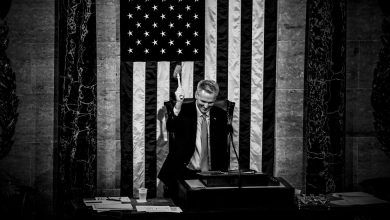N.Y.C. Tried to Fix High School Admissions. Some Parents Are Furious.

Even under ordinary circumstances — ones that don’t involve a pandemic and all the learning loss and mental-health challenges that have come with it — the process of getting a child into a selective public high school in New York City is a byzantine exercise that seems to require an expertise in game theory and a time commitment roughly equal to what it takes to read “The Power Broker” several times over.
For years now the system has favored families who have the flexibility to devote to such an operation, as well as the financial means to live in neighborhoods with high-performing feeder schools, resources for tutors and in some cases, consultants to help them navigate admissions, all of which has served to further drive inequality and segregation.
A child’s admission to a sought-after high school is rarely her success alone but one she shares with a driven mother or father, who has most likely put other obligations aside to do research, tour schools and strategize around the best chances for attaining the perfect fit. Texting with a friend earlier this week, I congratulated him on his son’s acceptance to two top schools; he wrote back that the work had taken him the better part of the year.
Toward the end of Bill de Blasio’s second term, Covid pushed his administration to finally address the imbalances — to streamline the application process in the hope of making these schools more accessible to a broader world of students. Though the changes were big, they were not immediately celebrated by advocates for school integration. At the time, Nyah Berg, the executive director of New York Appleseed, called them the “bare minimum,” noting that a lot of “gatekeeping tools remain.”
As we’ve seen over the past week, the period in which the city has notified students where they have been admitted, these efforts at addressing persistent inequity have brought new, polarizing complications. Parents whose children did not get placed in schools they hoped to go got angry, believing their hard-working middle schoolers had toiled in vain. Politicians were called; lawsuits were getting talked about; moves to Westchester were in play.
Some back story: Apart from what are known as the specialized high schools — hypercompetitive institutions like Stuyvesant and Bronx Science that, controversially, admit students on the basis of a single standardized test — the city gives eighth graders the option of applying to 160 screened high schools and programs that have their own criteria.
Whether a student qualifies for one of these selective schools has typically depended on an opaque combination of grades, test scores (different from the ones used for the specialized high schools), essays, art portfolios and other work. The next step has students rank their preferences in descending order on a scale of one to 12, after which they are thrown into a lottery. A prizewinning algorithm developed to match medical students to residency programs then determines where a student is placed.
Among high-achieving families in Manhattan, brownstone Brooklyn and many parts of Queens, the goal is not a spot in just any of the 160 schools but admission to eight or nine that are especially competitive, prestigious and largely dominated by white and Asian families. What has caused such ire in the current admissions cycle is that many parents discovered that their children — students with grade-point averages in the high 90s, for instance — were admitted to none of their ranked choices. Instead they would be funneled to schools they knew little about.
A wider pool of eligible applicants has given the lottery number of every student greater weight. The state exams, usually a determining factor in high school placements, had been abandoned during the pandemic. So, too, were attendance records. Students with grades in the mid-80s were now bundled with those who had much higher averages, meaning that an eighth-grader with an academically stellar record but a poor lottery number could easily lose out to a merely very good student with a great lottery assignation.
Aggrieved parents quickly began expressing their frustration on various platforms. In an online discussion with the Department of Education, one mother explained that her son had “excellent grades, no disciplinary issues and was not given any of his 12 choices, which is a travesty.” She went on to say that her son had asked her why he should “try to finish off the year, completing work, if it doesn’t matter.”
A father whose daughter had also been rejected from every school on her list said that she now had a position on a wait list “in the thousands” and that this was “unacceptable.” She was, he said, “an A student” burdened with a terrible lottery number, and he wanted to know “what can be done.” Both parents received the exact same convoluted bot-like response from the education department’s panelist, only infuriating the community of the disappointed even more.
By Tuesday a city councilman from Queens had written an irate letter to the department asking to reverse the policy “immediately.” By Wednesday, one group of parents was planning a rally in front of Tweed Courthouse for later in the week under the banner, “Merit Matters,” which asked protesters to come with signs and “fury.”
It will take a long time to know whether these tweaks in the system — which may or may not remain in coming years — will effect the desired change, something contingent, in part, on the kind of support students who might be new to intensely rigorous curriculums receive in order to succeed. How easy it will be to provide that kind of support given recent cuts to the city’s education budget, defended on the grounds that school enrollment has declined during the pandemic even if need has not, is hard to know.
One parent I spoke with, Vernecya Fields — a single mother of four who works for the M.T.A. — told me that because her daughter struggled with anxiety and was coming from a middle school that was lax and gave very little homework, she did not think that Beacon, one of the most competitive high schools, would have been a place where her daughter could thrive, even though she had strong grades and a very good lottery number and considered listing it in first place. Ms. Fields had chided parents in a Facebook group over their entitlement — the belief, as she saw it, that their own children were more deserving of admission to the best schools over low-income children who might also be Black and brown. But despite all that, she told me, she thought the current lottery system was far from ideal.
Preliminary data from the Education Department does show that the needle has been moved in some of the most desirable screened high schools. Townsend Harris in Queens, for example, made 23 percent of its offers to Black and Latino students this spring, up from 16 percent last year. At Millennium Brooklyn, the percentage of offers to Black and Latino students more than doubled, to 43 percent. And the number of offers made to students on free or reduced-price lunch increased at screened schools across the board.
The difficulty of really swaying things, however, was obvious in another year of dismal admissions numbers for Black and Latino students at the specialized high schools. Although one-fifth of all students who took the entrance exam were Black, only 3.2 percent were given a place at one of the eight schools. Out of 756 students offered admission to Stuyvesant this year, only 11 are Black and only 23 are Latino.





